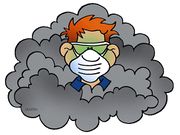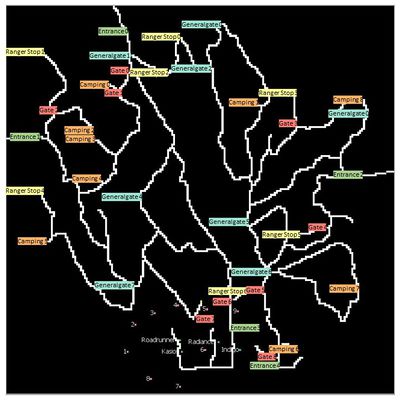ISSS608 2016-17 T3 Assign ANGAD SRIVASTAVA Overview
|
|
|
|
|
|
The Authors of the Challenge
The Visual Analytics Science and Technology (VAST) Challenge is an annual contest with the goal of advancing the field of visual analytics through competition. The VAST Challenge is designed to help researchers understand how their software would be used in a novel analytic task and determine if their data transformations, visualizations, and interactions would be beneficial for particular analytic tasks. VAST Challenge problems provide researchers with realistic tasks and data sets for evaluating their software, as well as an opportunity to advance the field by solving more complex problems. These challenges are open to participation by individuals and teams in industry, government, and academia.
Background Information
The adjacent map of the city shows the Boonsong Lekagul Nature Preserve, which is used by residents and tourists for day-trips for overnight camping or sometimes just passing through to access main thoroughfares on the opposite sides of the preserve. The bottom portion of the map also shows a small industrial area consisting of 4 manufacturing factories and 9 chemical sensors.
Who is Mitch Vogel?
Mitch Vogel is a post-doc student studying ornithology at Mistford College and has been discovering signs that the number of nesting pairs of the Rose-Crested Blue Pipit, a popular local bird due to its attractive plumage and pleasant songs, is decreasing! The decrease is sufficiently significant that the Pangera Ornithology Conservation Society is sponsoring Mitch to undertake additional studies to identify the possible reasons. Mitch is gaining access to several datasets that may help him in his work, and he has asked us, as experts in visual analytics, to help him analyze these datasets.
The details of the challenge, as covered in the subsequent section, are to be tackled with by using innovative visualizations and data analysis that will help Mitch discover the potential problem areas.
Overview of Mini Challenge 2
The four factories in the industrial area are subjected to higher-than-usual environmental assessment, due to their proximity to both the city and the preserve. Gaseous effluent data from several sampling stations has been collected over several months, along with meteorological data (wind speed and direction), that could help Mitch understand what impact these factories may be having on the Rose-Crested Blue Pipit.
Mitch Vogel was immediately suspicious of the noxious gases just pouring out of the smokestacks from the four manufacturing factories south of the nature preserve. He was almost certain that all of these companies are contributing to the downfall of the poor Rose-crested Blue Pipit bird. But when he talked to company representatives and workers, they all seem to be nice people and actually pretty respectful of the environment.
In fact, Mitch was surprised to learn that the factories had recently taken steps to make their processes more environmentally friendly, even though it raised their cost of production. Mitch discovered that the state government has been monitoring the gaseous effluents from the factories through a set of sensors, distributed around the factories, and set between the smokestacks, the city of Mistford and the nature preserve. The state has given Mitch access to their air sampler data, meteorological data, and locations map.
The primary job for Mitch is to determine which (if any) of the factories may be contributing to the problems of the Rose-crested Blue Pipit. Often, air sampling analysis deals with a single chemical being emitted by a single factory. In this case, though, there are four factories, potentially each emitting four chemicals, being monitored by nine different sensors. Further, some chemicals being emitted are more hazardous than others. The task, as supported by visual analytics applied, is to detangle the data to help Mitch determine where problems may be and use visual analytics to analyze the available data and develop responses to the questions asked in the VAST submission section.


